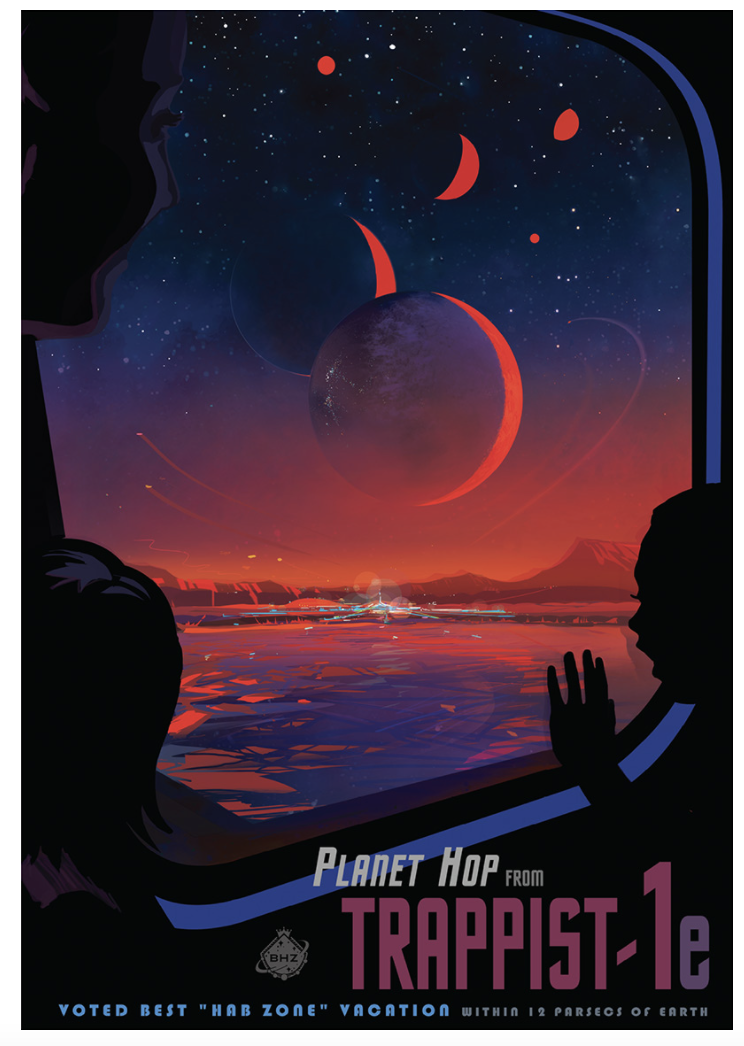Quickies | The James Webb's First Target

I just read an interesting NASA post about a fascinating little “solar” system only 41 light-years distant. It’s a tiny red-dwarf star, only a tenth the size of our Sun, called Trappist-1. And, it’s surrounded by seven Earth-sized, rocky planets. The star and all of seven of it’s planets would fit within the orbit of Mercury!
Here are two additional tantalizing facts:
1) The system may be three or four billion years older than ours. (Meaning if life did evolve, it may have gotten a 4 billion year head-start on our Earth)
2) The fourth planet from the star, called TRAPPIST-1e, is in the “Goldilocks” zone—where its “just right” temperatures allow water to exist as a liquid.
The mind races:
What if Life’s having a 4 billion-year head start meant introspective beings like ourselves, got a 4 billion year head start?
To such a being, wouldn’t six other planets, in such proximity, cry-out the need for space travel?
The James Webb Space Telescope (JWST) might be able to resolve these questions, by spectrographically sampling Trappist-1e’s atmosphere. It could even detect air-pollution, if any, That’s why the Trappist-1 system will be one of it’s first targets.
NASA says,
“What is at stake here is the first atmosphere characterization of a terrestrial Earth-size planet in the habitable zone”

